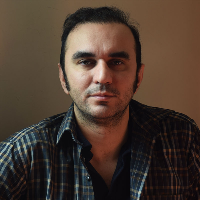The analysis of the visual structure of Farhadi’s films (With analysis of About Eli, A separation and The past)
Author(s):
Article Type:
Research/Original Article (دارای رتبه معتبر)
Abstract:
The visual structure of a film is a construction of connected visual elements of that film. This structure is used to progress the story, make the meaning and transfer the feeling of that film to audiences. So a good way for studying any filmmaker’s films is to understand his or her film’s visual structure and techniques. In this text, the goal is achieving this understanding about Asghar Farhadi’s films. This doesn’t mean that we want to understand the image in his films abstractly, but we want to analyze the connection between image and story in his films, So we use a descriptive and analytic method. At first we describe the connection between image and story, and then we analyze this question that why Asghar Farhadi’s visual techniques are so impressive and effective. In this text also we emphasize on visual structure as a dynamic set which is completed in audiences. For this reason at first we describe different parts of a visual story according Boris Block’s theory and we try to reveal how the visual characteristics of a film change through these different parts. Then we study the relationship between semantic structure and image in films. Then we analyze Asghar Farhadi’s films according to the connection between visual structure and story and we disclose Farhadi’s visual techniques in the process of storytelling. The most important questions of this research are that how image in a film can fulfill dramatic goals of that film, How it transfers feeling and meaning of a certain film to audiences. How it progress conflicts of a film. For answering to these questions we should go back and study film not from image but from story. We should grab and understand the meaning of story and its structure. The image is a vehicle to transfer the story. So understanding story structure is necessary for understanding image. But how can we understand story. A very effective way to do this is to divide story to three different parts; 1-Exposition; 2-Conflict; 3-Resolution. Exposition means revealing the characters and story conditions. Conflict is a situation in which the main character fights against antagonists or other obstacles. And resolution is the end of a film, when other story lines will be completed. And also there are several important points in a film, for example the beginning of a crisis and climax. Block believes that all these parts and points have equals in visual structure of a film. So we can talk about visual exposition, visual conflict and visual resolution. Any of these parts has its own visual attributes. So for analyzing visual characteristics of Farhadi’s films, we should study these different parts in his films. According to this study we deduce that Farhadi, with the use of visual realism, makes dramatic constructions of his films stronger and attracts audiences to his characters. For this reason, visual techniques like deep space, handheld camera, several points of views, limited color pallet, merging negative and positive spaces and high key lighting become main methods for cinematic expression in his films.
Keywords:
Language:
Persian
Published:
Honar-Ha-Ye-Ziba: Honar-Ha-Ye Mosighi Va Namayeshi, Volume:23 Issue: 60, 2018
Pages:
37 to 46
magiran.com/p1916342
دانلود و مطالعه متن این مقاله با یکی از روشهای زیر امکان پذیر است:
اشتراک شخصی
با عضویت و پرداخت آنلاین حق اشتراک یکساله به مبلغ 1,390,000ريال میتوانید 70 عنوان مطلب دانلود کنید!
اشتراک سازمانی
به کتابخانه دانشگاه یا محل کار خود پیشنهاد کنید تا اشتراک سازمانی این پایگاه را برای دسترسی نامحدود همه کاربران به متن مطالب تهیه نمایند!
توجه!
- حق عضویت دریافتی صرف حمایت از نشریات عضو و نگهداری، تکمیل و توسعه مگیران میشود.
- پرداخت حق اشتراک و دانلود مقالات اجازه بازنشر آن در سایر رسانههای چاپی و دیجیتال را به کاربر نمیدهد.
In order to view content subscription is required
Personal subscription
Subscribe magiran.com for 70 € euros via PayPal and download 70 articles during a year.
Organization subscription
Please contact us to subscribe your university or library for unlimited access!



